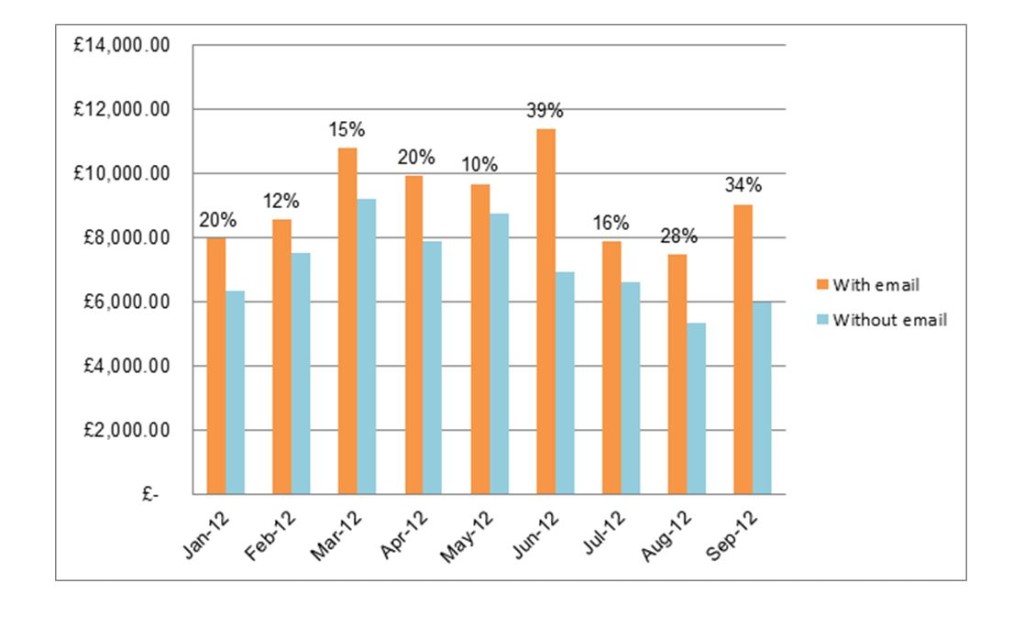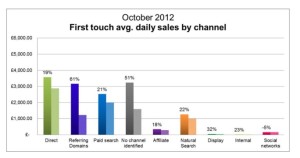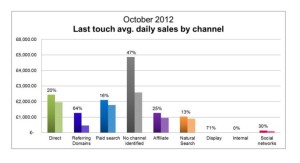Marketing departments across the globe are constantly trying to demonstrate the sales generated and ROI of their activities, but evaluating the success of multi-facetted marketing strategy can be challenging. While some disciplines are easier to measure than other, the real dilemma for marketers is actually in assessing which sales should be attributed to which channels.
There are a host of different models, but each can tell a very different story, so it’s important to keep an open mind in order to understand true marketing performance.
Measuring the Unmeasurable
For example, in the field of email marketing alone – my personal area of expertise – there are many ways in which businesses can use attribution models and ROI to look at the long-term impact of marketing activity.
The most common attribution models for email marketing will include the following elements: types of action (sent, opens, clicks), timeframe (days, weeks, months from action) and order of touch (first, last, any). Choosing the right type of measurement depends on the elements which are specific to the business.
The most popular approach is to focus on tracking behaviour or conversion as a result of an email click, but this can be difficult as in the real world not everyone will click through from your email, go to the website and purchase immediately. In fact, they might not even open it at all.
There is strong evidence to suggest that some people might see the subject line mentioning a call to action, for example a sale, and make a mental note of it. This could result in a purchase through another channel or in store a few days or even weeks later. This is proven by the UK DMA’s 2013 Consumer Tracking Report, which demonstrates the value of email’s broad range of responses. 23% of respondents mentioned “visiting the company’s website via another route” as a likely response to an interesting mail and 25% cited “visiting a shop or retail outlet”.
Dissecting the details
You may be wondering how it might be possible to measure the impact of email marketing when people haven’t even clicked through, but there is information available that can help.
The answer is to dissect the details, and analysing the revenue from all marketing channels is a good place to start.
To illustrate this, the diagram below is taken from our own client data and shows average daily revenue in the month on days in which email was sent (orange) compared to the average daily revenue for days which no email was sent (blue).
As none of the bars include revenue attributed to email, it is clearly illustrated that ‘email days’ deliver higher revenue through non email channels.

Taking this one stage further, we can also break this data down to a single month and look at all the different marketing channels used by the business, still comparing days with an email sent to those without.
The below tables look the source of revenue based on ‘first touch’ or ‘last touch’ attribution models, revealing that email still has the biggest impact where no channel at all has been identified.
These tables also highlight that whether using a ‘first touch’ or ‘last touch’ model, either is likely to overstate the influence of some channels and understate the effect of others.
For example, email is one marketing discipline that often plays its role ‘in the middle’ rather than at the beginning or end, and may not even yield a click, but according to the tables below it could be responsible for a 20% uplift in sales. Therefore, by analysing the data a little deeper businesses can understand the true impact of their marketing activities.
Open mind
The main conclusion from the data here is that email drives significant sales through other channels. More importantly, however, it also tells businesses that they must consider the bigger picture when it comes to measuring the success of their marketing campaigns. See how certain channels, such as email, broadcast or TV, can contribute and support others.
By keeping an open mind when it comes to the models they use to attribute sales and equate ROI, businesses can truly understand the impact of its marketing as a whole – rather than just a channel at a time.







